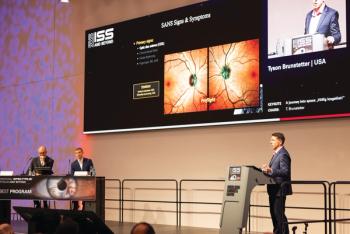
Corneal neovascularization: the unmet need in the management of corneal grafts
Treating corneal neovascularization and the need for new and better treatments.
Key Points
One of the most common transplant procedures in humans today is penetrating keratoplasty1,2 (more recognizable to patients as corneal transplant or graft) – although the number of patients involved worldwide is relatively small. Currently over 40,000 corneal grafts are performed every year worldwide3 to prevent blindness from acquired (e.g. infection) and inherited (e.g. Stevens-Johnson syndrome) corneal disease,1,4,5 which is the fourth cause of visual impairment after cataract, age-related macular degeneration (AMD) and glaucoma in industrial countries.6
The failure of a corneal graft may occur as a result of bad donor tissue (primary failure) or due to early or late postoperative complications. However, one of the most common reasons for corneal graft failure is immunological corneal graft rejection,1,4 which occurs in around 30% of cases7,9 (equivalent to approximately 2,520 patients worldwide after the first year). Rejection can occur at any layer of the cornea, but the decisive factor for the survival of a corneal graft is the integrity of the corneal endothelium, a non-replicating monolayer of cells that is largely responsible for maintaining corneal clarity. Any factor that adversely affects this layer can result in endothelial rejection, usually accompanied by 'deep' stromal rejection, which can be difficult to manage effectively compared with epithelial (superficial) rejection. Yet effective prevention or treatment is essential as corneal graft rejection can result in serious, sometimes irreversible ocular damage.10
There are a number of risk factors that can help to predict the likelihood of corneal graft rejection, including:
Of these, neovascularization within the normally avascular host cornea prevails as the most established and recognized risk factor,1,10 with an increased risk of rejection that ranges from 0–10% in avascular host corneas to 25–50% in severely vascularized host corneas.12
Newsletter
Get the essential updates shaping the future of pharma manufacturing and compliance—subscribe today to Pharmaceutical Technology and never miss a breakthrough.












































